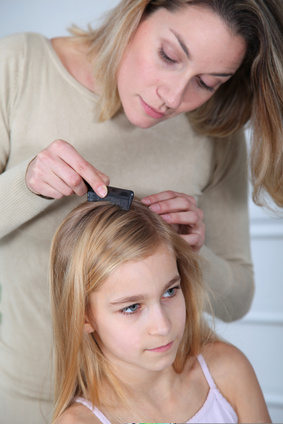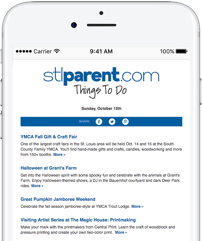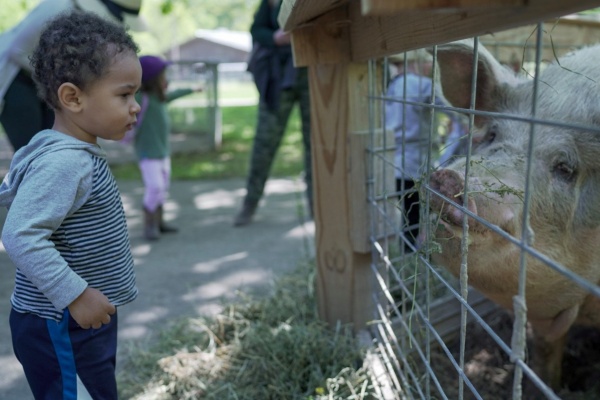
Head Lice Love Summer Vacation as Much as Your Kids Do
Your kids aren’t the only ones celebrating the end of the school year.  Head lice love summer, according to removal expert Libby Lutz. There’s heat, there’s humidity and, best of all, there’s a lack of school personnel disturbing their peaceful procreation.
Head lice love summer, according to removal expert Libby Lutz. There’s heat, there’s humidity and, best of all, there’s a lack of school personnel disturbing their peaceful procreation.
Lutz, who founded Lice Busters St. Louis, said the back-to-school season is her busiest time, but lice are common in the summer too. Because it takes four to six weeks for lice to cause itching and thus give away their hideout, school vacation is a great incubation period for an infestation.
There are simple prevention steps parents and kids can take, including:
- Avoid sharing personal items and head-to-head contact.
- Wear long hair up.
- Do regular checks using a good-quality metal comb.
Lutz explained that lice are hard to identify – even school nurses sometimes get it wrong – especially in the egg or “nit” stage. When eggs are initially laid, they’re almost clear. They do gradually get darker, but “lice do a good job of camouflaging eggs based on hair color of the child,” she said. Once they’ve hatched, lice spend nine to 12 days in the nymph stage, when they are lighter in color than adults, according to the Centers for Disease Control and Prevention.
Of the three stages, adults are obviously the biggest but since they shy away from light and movement, identifying an infestation is usually best done by finding eggs in the hair. Eggs are about the size of a strawberry seed and are glued onto the hair shaft, which is why a good metal comb is needed to remove them. (If you’re not itching already, check out the CDC’s enhanced photo of an adult grasping a hair.)
For first-time cases where parents don’t know what to look for, the removal process can take six or seven hours, Lutz said, especially in children with long, thick, dark hair. Once parents have learned to identify the three stages, that time can be cut to two hours. “It’s a lot quicker once you know the tricks of the trade,” she added.
The tricks? Buy a good metal comb (the Terminator brand is good and costs between $10 and $20). Wet the hair and apply conditioner, then comb through, keeping in mind that the tines of the comb need to touch the scalp each time. Wipe the comb on a wet white paper towel. Look for brownish flecks on the paper towel. Be very systematic.
If you find them, don’t pick the lice to remove them. You’ll need to treat the affected person with a pediculicide (fancy word for lice medicine). Check everyone else in the home, and plan to re-treat everyone who’s affected at least once, because not all medicines kill all the nits. And parents need to do a thorough vacuuming, wash and dry all sheets and blankets on high heat, and disinfect brushes or leave them in a sealed plastic bag for a week or two. As Lutz knows first hand, finding a recurrent infestation is a major bummer.
The first time her daughter was infected, she checked her for weeks before finally discovering the lice. She spent hours combing them out and treating her scalp. “A week later, I look in her hair and I see live bugs again,” Lutz recalled. A month later, the same story. “It literally did bring me to tears.”
After that experience, she said, “Even though I am not a huge bug person – I cannot stand the sight of a spider or cockroach – I knew that I had to [start this company].
Lutz said continuing to comb regularly is key to preventing a reinfestation. She recommends 30 minutes a day, three times a week, for at least two weeks. After that, parents can do a quick “combing check” weekly.
One thing that would really help stop the spread of lice is sharing the news. “People are embarrassed, and they don’t tell the school or playmates, and then the problem grows and spreads,” she said. “But it’s not something to be embarrassed about.”
Though preschool and elementary students are most likely to be among the 6 to 12 million Americans infected each year, Lutz said her clientele includes quite a number of freshman girls. And, of course, parents can get lice from their children.
Something to think about on these long, hot summer days when we’re all sharing beach towels!
By Amy De La Hunt, Health Blogger for SmartParenting

Amy De La Hunt is a journalist and editor who lives in the St. Louis metro area and works across the country as a writer, copy editor, project manager and editorial consultant on everything from fiction books to monthly magazines to blog posts. When she's not chauffeuring her teenage sons to activities, Amy is an enthusiastic amateur cook, landscaper, Latin dancer and traveler. Follow Amy on Instagram @amy_in_words




















